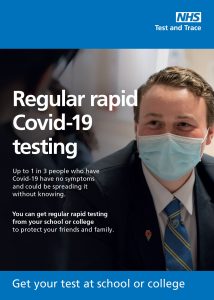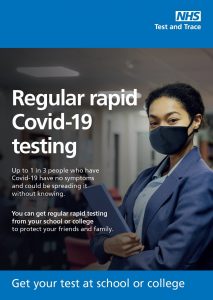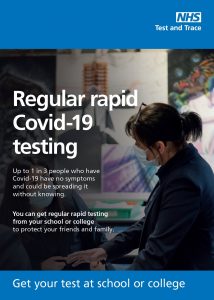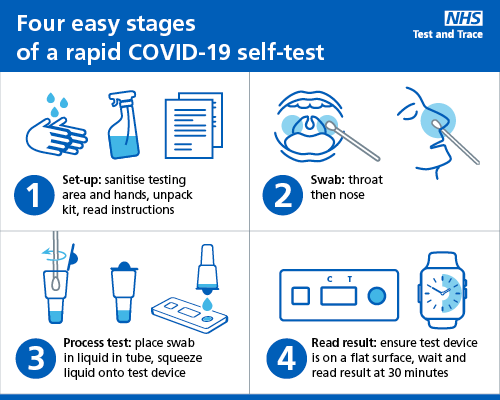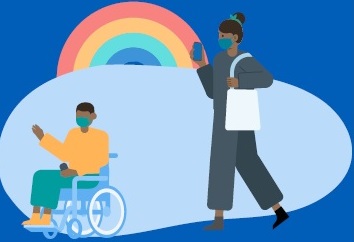 |
Parents with children at nurseries, schools and colleges
|
Regular rapid testing is now available for parents, their households and bubbles.
Regular rapid testing is a fast and easy way to find out if you have coronavirus and help protect your loved ones and community. It’s free and takes around 30 minutes.
Why introduce regular rapid testing?
Up to 1 in 3 people who have Covid-19 have no symptoms and could be spreading it without knowing.
Regular rapid testing is now available for parents of nursery, school children and college students. As well as adults in their households, childcare and support bubbles.
Regular testing for people without symptoms is already taking place across the country. Thousands of people who didn’t know they had the virus have been able to take action to stop the spread of the disease.
As lockdown restrictions ease, getting into the regular habit of twice weekly testing will play an important role in getting back to normal; alongside the vaccine, following the hands, face, space guidance, and social distancing measures.
Regular testing for school staff and students
Regular rapid testing is already available to all staff at nursery, primary and secondary schools and colleges.
Secondary school and college students aged 11 and above will continue to access regular rapid tests directly through their school or college. And we continue to encourage them to get tested.
On return they will initially be supervised while testing at school and then continue to test themselves at home with test kits they will get from school or college.
Nursery and primary school children are not being asked to be tested as evidence continues to show that children and young people are at low risk from Covid-19 and are very unlikely to get seriously ill.
What is the benefit to you?
By taking part in regular rapid testing, you’ll be protecting yourself and your loved ones. And helping us all get back to a more normal way of life.

How does it work?
It’s a simple swab test you can do at home, school, work or test site, using a Lateral Flow Device (LFD). It takes around 30 minutes to find out if you have the virus.
The test detects viral proteins that are present when someone has Covid-19. Research from Public Health England and Oxford University shows that they pick up the vast majority of people in the most infectious stage of the disease. With up to 1 in 3 people who have the virus showing no symptoms – they could be spreading it without knowing.
Testing should take place twice a week, every three – five days, ideally in the morning. Why not add this to your morning routine?
If you test negative, you can continue to go to work. You should still strictly follow all other government guidelines and avoid all unnecessary contact. If you, your household or bubble test positive, you should all selfisolate immediately. And then the person who has tested positive should also take a confirmatory PCR test and follow latest government guidance.
For more information visit http://gov.uk/guidance/understanding-lateral-flow-antigen-testing-for-people-without-symptoms
Reporting your test
You should report your results online straight away, even if your result is negative or void. It’s easy to do at: http://gov.uk/report-covid19-result
Results can also be reported via telephone by calling 119 (free from mobiles and landlines). Lines are open every day, 7am to 11pm.
If you have tested positive, you can also check to see if you are eligible for the £500 Test and Trace Support Payment.
Where can I get tested?
If you are a parent or adult of a household, childcare or support bubble you can either:
- Get an assisted test at work if it is available.
- Attend a test site to get tested (where you will be able to see how to take the test) or pick up tests to do at home.
- Order a test online to do at home.
To find out how to get a free rapid Covid-19 test visit http://gov.uk/coronavirus-school-household-testing
Regular rapid testing is for those without symptoms of Coronavirus. If you have symptoms, you should continue to book through http://nhs.uk/coronavirus
Test yourself for COVID-19 twice a week Up to 1 in 3 people are asymptomatic – they show no signs of having COVID-19. Testing yourself regularly helps stop the virus spreading. |
|
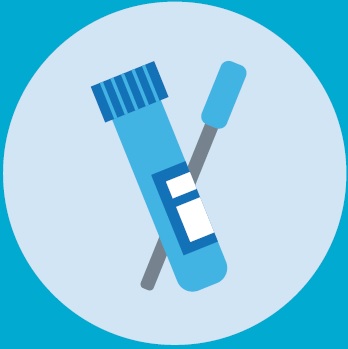 |
Testing Pick up your pack of test kits at school. Testing is simple and quick – you can do it at home and get the result in 30 minutes. Test yourself twice a week, or every 3 to 4 days. |
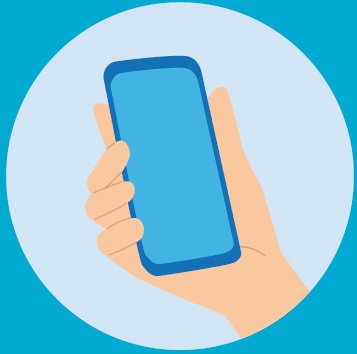 |
Report your result You should report your result immediately at www.gov.uk/report-covid19-result. Report your result, whatever it is, to your school. |
Additional resources:
Schools Self Test EasyRead guide.pdf
Schools How to Self Test.pdf
Schools Step by step guide.pdf
